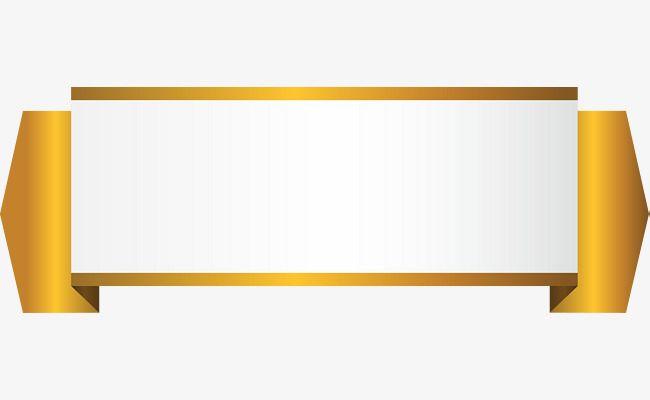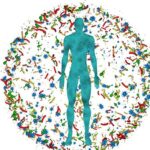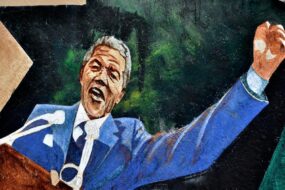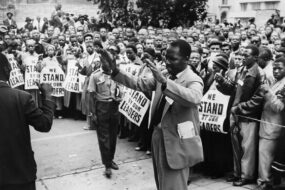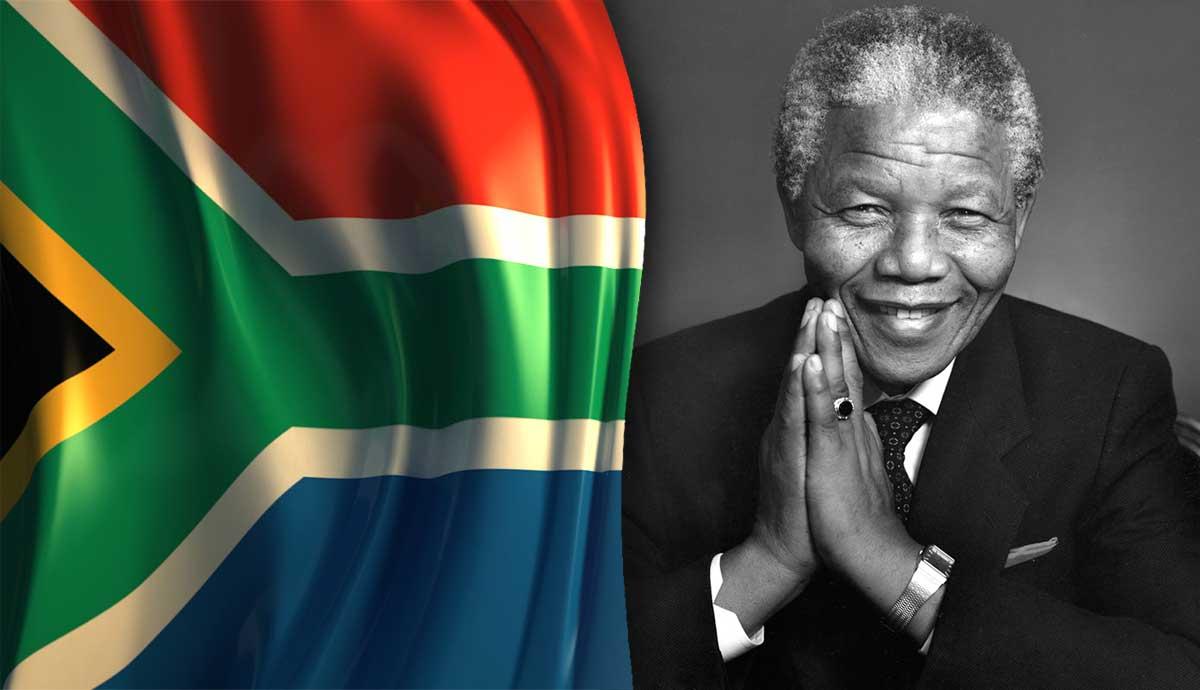
#TheDarkSideOfRainbowNation: Unveiling South Africa’s Secret Military Experiments and Classified Government Projects
What if you discovered a secret so sinister, even whispering about it could land you in a maximum-security prison? In the tumultuous era of apartheid, south Africa was a hotbed of clandestine operations, covert missions, and top-secret experiments. Behind the façade of a nation torn apart by racial tensions and resistance movements, the government and military were busy concocting some of the most audacious and disturbing projects the world had ever seen. From chemical warfare agents to advanced surveillance technology, the apartheid regime spared no expense in maintaining control and crushing dissent.But one project stands out for its sheer audacity, moral depravity, and lasting impact: the story of South Africa’s secret military experiments and classified government projects.
In the early 1980s, as the anti-apartheid movement gained momentum, the South African government became increasingly desperate to maintain its grip on power. The country was in chaos, with protests, boycotts, and armed resistance erupting across the nation. In response, the government turned to its military and intelligence agencies to devise new ways to quell the uprising. One of the key players in this sinister saga was the South African Defence Force’s (SADF) secret research and development unit, known as Project Coast.Officially, Project Coast was tasked with developing a range of non-lethal incapacitating agents, supposedly for use in crowd control and riot situations. However, as the project progressed, it became clear that the true intentions of its creators were far more sinister.
Led by the enigmatic and brilliant Dr. Wouter Basson, a renowned chemist and toxicologist, Project Coast embarked on a program of research and experimentation that would take the country down a dark and twisted path. basson, a former head of the south African Chemical and Biological Research Institute, had a reputation for his innovative approach to chemical warfare. Under his guidance,Project Coast began to explore the use of chemical and biological agents to disrupt and disorient opposition forces. The project’s scientists developed an array of deadly substances, including nerve agents, toxins, and psychoactive compounds. These were designed to be dispersed through various means, including sprayers, aerosols, and even food and water contamination. The south African government claimed that these agents were intended for defensive purposes only, but evidence suggests that they were used in a more proactive and aggressive manner.
As Project Coast gained momentum, it became clear that the apartheid government was willing to push the boundaries of ethics and morality to achieve its goals. Test subjects for these experiments were sourced from various channels, including psychiatric patients, prisoners, and even unsuspecting civilians. Many of these individuals were subjected to involuntary experimentation, often with devastating consequences. Some test subjects were exposed to powerful psychoactive substances, which left them with permanent psychological trauma and brain damage. Others were deliberately infected with diseases, such as HIV and tuberculosis, to test the efficacy of experimental vaccines. The human cost of project Coast’s activities was staggering, and it would take years for the full extent of its atrocities to come to light.
Meanwhile, another covert operation was underway, one that would become synonymous with the brutality and ruthlessness of the apartheid regime. The Civil Co-operation Bureau (CCB), a supposedly innocuous-sounding institution, was actually a secret police unit tasked with carrying out targeted assassinations, sabotage, and subversion. The CCB was notorious for its use of advanced technology, including high-tech surveillance equipment and encrypted communication systems. Its operatives were trained in the art of deception and manipulation,frequently enough using covert means to eliminate perceived threats to the state. The CCB’s activities were shrouded in mystery, but it is believed that they were responsible for the deaths of numerous anti-apartheid activists, journalists, and other perceived enemies of the state.
One of the most shocking aspects of Project Coast and the CCB’s activities was the level of international involvement and collusion. Documents have come to light suggesting that the apartheid government received significant support from Western intelligence agencies, including the CIA and MI6. These agencies allegedly provided technical assistance, intelligence sharing, and even funding for the projects. This raises disturbing questions about the complicity of Western powers in the atrocities committed by the apartheid regime.
In the late 1980s, as the apartheid regime began to crumble, Project Coast and the CCB’s activities were finally exposed to the world. The revelations sparked widespread outrage and condemnation, both domestically and internationally. Dr. Wouter Basson and other key figures associated with Project Coast were arrested and put on trial, but the extent of thier crimes and the full extent of the projects’ atrocities remain shrouded in mystery.
In the aftermath of apartheid, South Africa embarked on a long and painful process of truth and reconciliation. the Truth and Reconciliation commission (TRC), established in 1995, provided a platform for victims and perpetrators to confront the past and seek forgiveness. Though, many questions remain unanswered, and the legacy of Project Coast and the CCB continues to haunt the nation. The story of these secret military experiments and classified government projects serves as a stark reminder of the dangers of unchecked power and the devastating consequences of a government’s willingness to disregard human rights and dignity.
Today, as South Africa continues to grapple with its complex and often painful history, the story of Project Coast and the CCB serves as a cautionary tale about the importance of accountability, clarity, and human rights. It is indeed a testament to the enduring power of human resilience and the importance of uncovering the truth, no matter how arduous or painful it might potentially be.
#SouthAfricanSecrets #HiddenHistory #MilitaryExperiments #GovernmentProjects #ClassifiedSouthAfrica #InfographicStory #TrueStory #AfricanHistory #ApartheidRegime #ProjectCoast #CCB #HumanRightsAbuses #GovernmentCoverups #TruthAndReconciliation #SouthAfricanHistory
<img class="bimage_class" src="https://campusstore.co.za/wp-content/uploads/2025/04/a_1994.jpgeff4.jpg" alt="The Unyielding Spirit of nelson Mandela: A Fight Against Apartheid
Imagine being imprisoned for 27 long years, subjected to hard labor, and yet, upon your release, instead of seeking revenge, you become the symbol of unity and reconciliation for a nation torn apart by decades of racial segregation. This is the extraordinary story of Nelson Mandela, a man who defied the odds, challenged the status quo, and changed the course of history.Born on July 18, 1918, in the small village of Mvezo, South Africa, Mandela’s journey from a young lawyer to the first black president of South Africa is a testament to his unyielding spirit and determination.
Growing up in a traditional Thembu family, mandela was exposed to the values of community and social justice from an early age. His father,Gadla Henry Mphakanyiswa,was a local chief and a counselor to the Thembu royal family,and his influence played a significant role in shaping Mandela’s early life and ambitions. After his father’s death, Mandela was sent to live with the Thembu regent, Chief Jongintaba Dalindyebo, were he was exposed to the politics of the region and began to develop his own sense of purpose. Mandela’s academic prowess earned him a scholarship to attend the University of Fort Hare, one of the few institutions that offered higher education to black South Africans at the time. It was here that he became increasingly politicized, joining the Students’ Representative Council and protesting against the university’s policies.
as Mandela transitioned into adulthood, he became increasingly involved in the fight against apartheid, a system of institutionalized racial segregation that had been entrenched in South African society as the early 20th century. The apartheid regime, led by the National Party, had implemented a range of laws and policies designed to maintain white minority rule and suppress the black majority. Mandela’s involvement with the African National Congress (ANC), a organization dedicated to fighting for the rights of black South Africans, marked the beginning of a long and arduous journey. Alongside his friend and colleague, Oliver Tambo, Mandela established South Africa’s first black law firm, using his legal expertise to challenge the apartheid regime’s unjust laws.
The 1950s and 1960s were a tumultuous time in South Africa, with the apartheid government responding to growing resistance with increasing brutality.the ANC, under the leadership of Mandela and others, employed a range of tactics, from nonviolent civil disobedience to armed resistance, in an effort to bring an end to apartheid. The turning point came in 1962, when Mandela was arrested and charged with high treason. The subsequent trial, known as the Rivonia Trial, was a dramatic showdown between Mandela and the apartheid regime. In a bold and defiant courtroom statement, mandela declared his willingness to sacrifice his life for the cause of freedom and equality.The trial ended with Mandela being sentenced to life imprisonment, a fate that would have broken a lesser man.
Rather, Mandela used his time on Robben Island, where he was imprisoned, to further his education, to reflect on his experiences, and to plan for the future. Despite being subjected to hard labor and mistreatment, Mandela remained resolute, becoming a symbol of resistance not just for South Africans but for people around the world. The international community began to take notice of mandela’s plight, and a global anti-apartheid movement gained momentum. As the years passed, pressure mounted on the South African government to release Mandela, and in 1990, after 27 long years behind bars, he was finally freed.
Mandela’s release marked a new chapter in South African history. The apartheid regime, weakened by internal conflicts and external pressures, was on the brink of collapse. Mandela’s first act upon his release was to call for calm and restraint,urging his followers to avoid violence and to work towards a negotiated settlement. Over the next few years, Mandela played a key role in the negotiations that led to the country’s transition to democracy. In 1994,he became the first black president of South Africa,a momentous occasion that marked the end of apartheid and the beginning of a new era.
As president,Mandela faced the daunting task of rebuilding a nation torn apart by decades of conflict. He established the Truth and Reconciliation commission, a bold initiative designed to confront the atrocities of the apartheid era and to promote healing and reconciliation. Mandela’s leadership and vision helped to steer South Africa towards a more equal and just society, and his legacy continues to inspire people around the world. He passed away on December 5, 2013, but his spirit lives on, a testament to the power of courage, compassion, and determination.
The story of Nelson Mandela is a reminder that even in the face of overwhelming adversity, one person can make a difference. It is a testament to the human spirit’s capacity for resilience,forgiveness,and hope. As we reflect on Mandela’s life and legacy, we are reminded of the importance of standing up against injustice, of fighting for what is right, and of working towards a world that is more just and equitable for all.
#InfographicStory #WorldHistory #HistoricalEvents #DidYouKnow #TrueStory #HistoryNerd #GlobalFigures #NelsonMandela #Apartheid #SouthAfrica #MandelaLegacy #FightForFreedom #Reconciliation #Leadership #inspiration #Motivation #SocialJustice #Equality #HumanRights #AntiApartheidMovement”>

